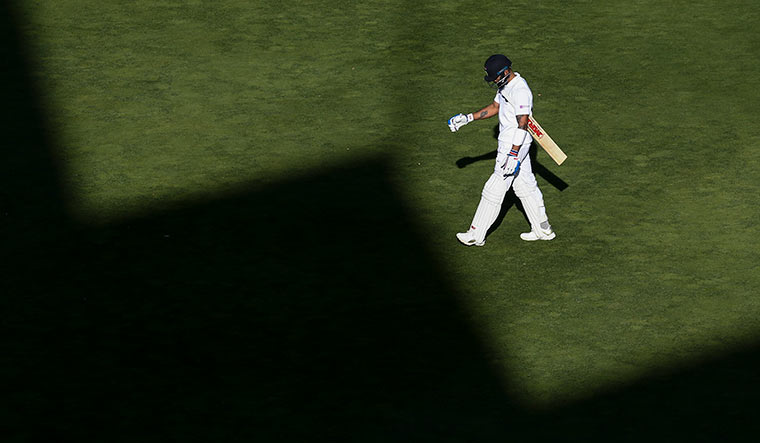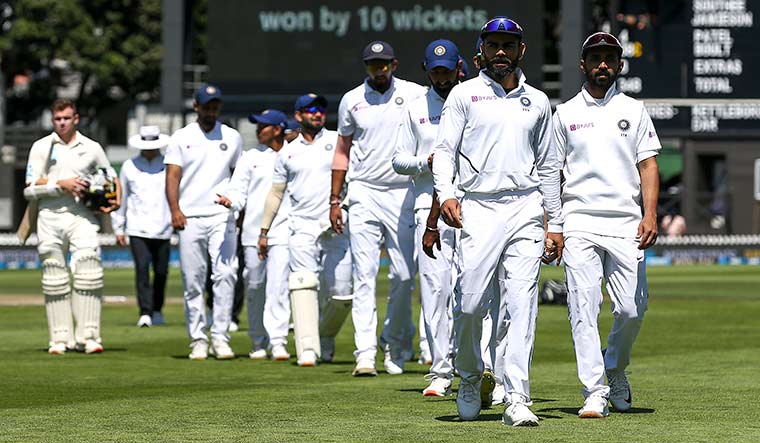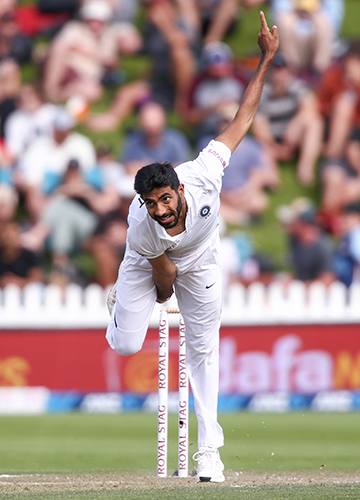WHEN NEW ZEALAND, after having lost the World Cup by a whisker, was thrashed 3-0 by Australia in a Test series at the end of 2019, it felt like a story where the good guys came last. Therefore, their recent success against India, especially in the Test arena, was a breath of fresh air. There was no theatrical behaviour; no fist pumping or expressive facial and body contortion.
Kiwi captain Kane Williamson was a silent, well-behaved and skilful executor, who got the job done without making a fuss. India were completely outplayed, outthought and out-behaved. The Black Caps were a classy bunch, who showed humility, respect and immaculate manners as winners. A side that proudly reflects the true spirit of the gentleman’s game.
Team India, on the other hand, looked like a bunch of boisterous, overconfident and brash individuals for whom aggression was the way and key to success. This new argumentative Indian is seen not only in the cricketers, but also in their die-hard fans. But behaviour apart, the pertinent question is what caused this dip in the performance of the team.
The players are earning well and are well cared for by the BCCI. How could New Zealand, with more sheep than people and a frugal domestic cricket structure, bring India to its knees? The Indian team had started to resemble a well-oiled machine. New Zealand’s defeat of India in the semifinals of the World Cup was seen as a one-off; a bad day at the office for India.
The side set off to New Zealand with clear aims: taking revenge for the loss in the World Cup by beating the Kiwis convincingly in all three formats and winning the two-match Test series to extend their already comfortable lead at the top of the ICC World Test Championship Table 2019-2021. (India with 360 points still lead second-placed Australia by 64. New Zealand jumped to third place with 180.)
The tour started off with a bang—the 5-0 win in the T20 series. But then complacency seems to have crept into the Indian think tank. India chose to experiment in the three-match ODI series, and youngsters were given game time. India could not defend 347 in the first ODI. Chasing the huge target comfortably was the boost of confidence the Kiwis needed. They completed two whitewashes—3-0 in ODIs and 2-0 in Tests.
The Indian Premier League could have benefited the New Zealand think tank. Their planning for each Indian batsman had information that must have been garnered from the domestic Indian grapevine. India did not seem to have done their homework.
The New Zealand batsmen were destroyed in Australia with a barrage of short rising balls by Mitchell Starc and Pat Cummins. India failed to learn from it. Instead, the New Zealand bowlers used the Aussie tactics on the Indians. Apart from the short deliveries aimed at the body, they kept a good line and length, with their bowlers releasing the ball rather than banging it in like the Indian pacers.
India missed the services of Bhuvneshwar Kumar, a genuine swing bowler, because of his injury. The regular injuries to Indian fast bowlers are a cause for concern. The two frontline pacers in New Zealand, Ishant Sharma and Jasprit Bumrah, were also returning from injuries. Something seems to have gone awry, considering how well bowlers are now monitored for wear and tear.
The lack of match practice for Sharma and Bumrah also cost big. They should have been made to play domestic cricket before returning to national duty. Sharma was injured again after a five-wicket haul in the first Test. Bumrah struggled to find his rhythm, and his yorker and out-swinger were missing. These deliveries require him to put much more stress on his body because of his bowling action.
Rohit Sharma was not available for the ODIs and Tests. The in-form K.L. Rahul was another absentee. This meant more onus on Kohli. The Indian captain had succeeded in dealing with his one major fault of playing the moving ball in England. His failure to do so in the first innings of the first Test caused a relapse. As Kohli rightly relayed later, he failed to take risks. This, he indicated, led to his and his team’s failure.
The lack of personal contribution had an effect on Kohli’s captaincy. He was like a man on a hot tin roof, hopping and hoping to get a wicket with every ball. He looked helpless when the new boy of New Zealand cricket, Kyle Jamieson, wreaked havoc with both ball and bat. It seemed as if Kohli had no plan to finish off the Kiwi lower order, and their wagging tail swept India under the carpet.
India’s two most dependable Test batsmen, Cheteshwar Pujara and Ajinkya Rahane, both with oodles of patience, were also sorted out by the New Zealanders. Pujara, with a batting average of nearly 50, did not look comfortable. His defence was shoddy and rusty. His angular backlift created a bat-and-pad gap which the New Zealand bowlers exploited.
Rahane looked at sea when faced with the moving balls and the short deliveries. Mayank Agarwal, who was phenomenal in India, did not inspire much confidence as an opener. All three got a half century, but they failed to do so together and did it with the least amount of confidence in their play. Indian players played by their instincts and fell into the traps laid out for them. They were not able to adapt and change.
The short ball and the legside attack, with fielders at forward and backward short-leg and in the long-leg and midwicket region, made scoring and surviving difficult for all the Indian batsmen. This was the strategy that New Zealand adopted in both Tests. Yet, the Indian batsmen failed to find a way to tackle it. Young Prithvi Shaw and the experienced Rahane fell to this ploy, among others.
Rishabh Pant, a player with immense talent, is still inadequate in terms of technique and temperament. He was a surprising choice as the wicketkeeper, ahead of the more established Wriddhiman Saha, especially after the latter’s performances in earlier Test matches. Teams can play around with a keeper in the shorter formats, but for Tests, a keeper is vital and keeping out the best man was another error in selection.
Indian selectors with a plethora of choices, seem to be uncertain as to who to play in the final 11. This chopping and changing is making life a little uncertain for the players who are on the fringe. Although the camaraderie and friendship among the players is visible, there is pressure to perform or perish in the body language when they are out in the middle.
The next Test series against Australia is at the end of the year. The Indian calendar is filled with limited overs games till the T20 World Cup in October. The Indian think tank will need to find time to go back to the drawing board and restructure the next phase of planning for the Indian Test side. If that does not happen, India could be knocked off its perch pretty soon.
Singh is a former Test cricketer.




